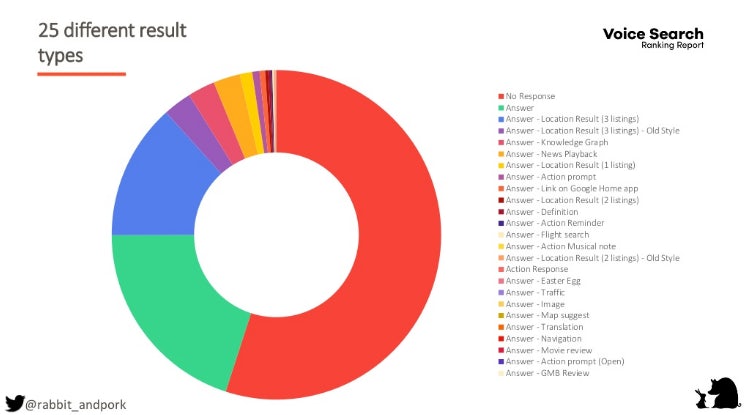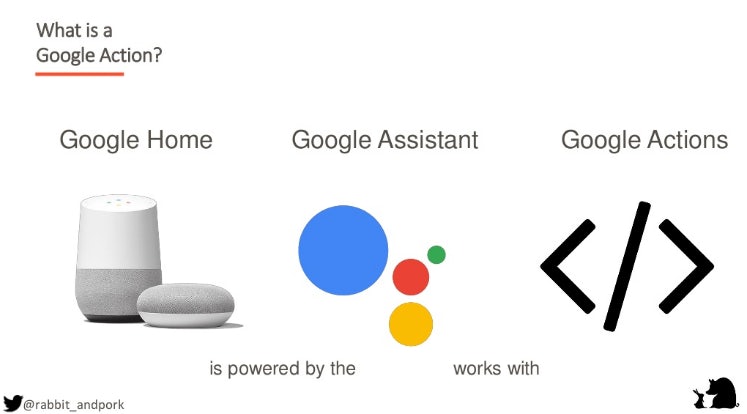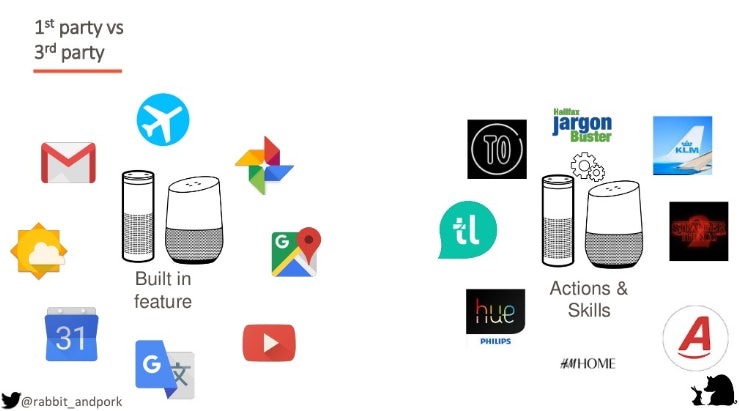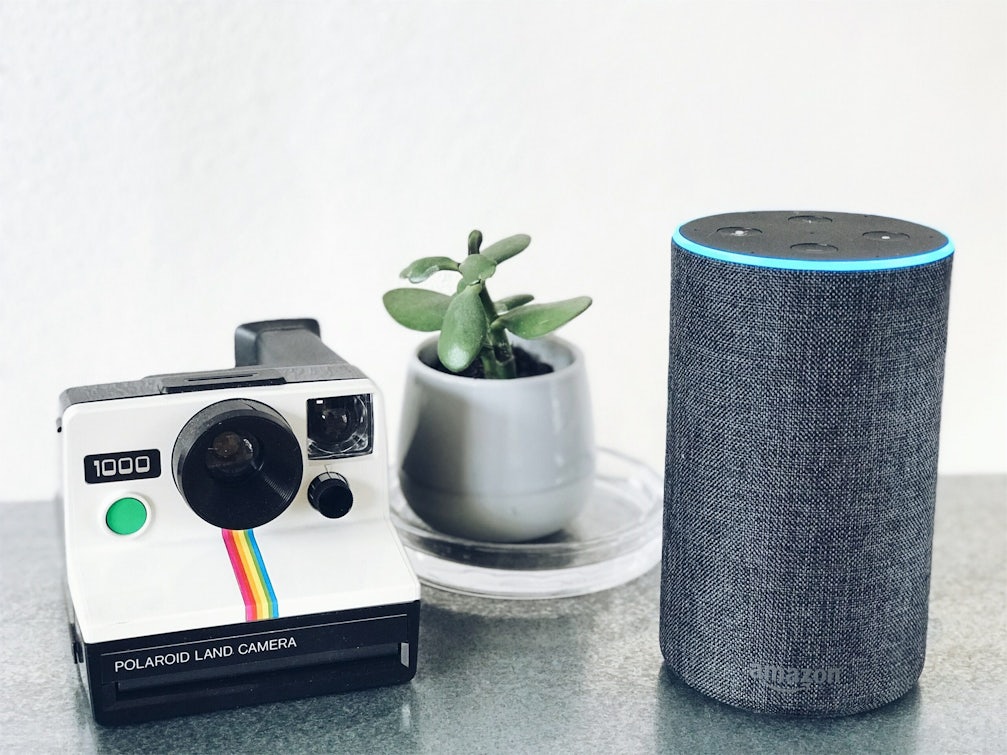Steff Preyer is Business Director at Rabbit & Pork, a voice experience agency. It’s called that because it’s cockney rhyming slang for ‘talk’ apparently! You can read more about her here on the BrightonSEO site.
Today she is going to go over the importance of voice visibility, the opportunity of tracking voice results on Alexa & Google and how can you adapt your strategy to make the most of it.
You can view the slides here.
By 2020, 50% of searches will be conducted via voice.
Today we will learn how to:
- quantify the opportunity
- steal market share
- track report and improve
But, firstly why the hype?
- During black Friday last year Amazon sold out last year echo
- 1bn voice searches every month
- 50% smart speaker owners say that they can’t now live without them
- Amazon and google lead the way
- The market leads an incredible trajectory
- More than 10% households now own a smart speaker: that’s more than own a pet rabbit
- It’s not just about smart speakers: people want to be able to fire a question at any inanimate objects and get results
- It’s increasingly an entire eco system rather than one channel
What do people use it for?
Top three uses of voice search right now include:
- checking the weather
- playing music
- asking a question: this presents huge opp for brand for lead gen and sales
The beauty of voice search is there is no second ranking.
Quantifying the opp for your brand.
Answers boxes
Answer boxes have been leading the way. Therefore answer box optimisation is a good start, and particularly from an SEO perspective its a good focus area.
Are there other types of results? Steff said this is something they wanted to know. Therefore, they developed a top voice search ranking report. What were the results?
Voice search ranking report
Turns out theres a lot more to voice search than answer boxes.
There were 25 top responses. You can view these in the slides here:

One of the main findings was that answer boxes don’t always make up assistant results.
It turns out that only 20% of answer boxes are used in voice search results. Why?
- sometimes the answers in position 0 are too long
- the answer may not structured for voice
- contains words that the assistant doesn’t know what to say
So, where do we start?
Research
Look into your industry.
There are whitelisted phrases which are already owned by Google, such as a ‘bass guitar tuner’ for example – so avoid duplicating anything that you have no chance appearing in voice for.
Which industries would work in voice search?
Rabbit & Pork decided to run a second report specifically looking at industry.
This second report broke their original voice ranking report down into 23 different sectors. This included business, fashion, utilities, travel etc. They then went through over 100k search terms.
The results?
The report found that there are huge variants across industries on Google’s ability to answer questions. It showed that industries such as transport, property and tech actually have very little ability to provide answers. This is not a bad thing; this means there is a huge opportunity here.
Additionally, they have been running this report over time to draw comparisons, and in fact they are now seeing Google get better and better – meaning that there are new results entering the market.
Notably, knowledge graphs are being more used in voice search, as are related questions, AI and semantic related topics. Also, the noticed that ‘ten step’ type articles often are appearing in voice search, which then get sent to the google home app.
How to gain voice search results?
Focus on areas in which you can have an impact.
We can look at:
- Areas where there is no answer already
- Where there are existing featured snippets
Firstly, how do we gain answer boxes?
- research to find questions
- answer the question concisely
- on-page level SEO
- using correct html structure
- schema markup
- tracking and updating
Voice optimisation is much more than answer boxes.
What is Google action?
- Google home is powered by the google assistant which works with Google actions, which can be powered by 1st and 3rd party apps. This works similarly within Amazon.
You can see how this works here:

Actions can come from 1st or 3rd party apps, such as the following:

Discoverability using invocation
What if you are a third party app, how can we use voice search to be discovered? There are two ways:
1. Brand: explicit invocation
Aware of the brand, the user says “take me to the trainline”
2. Generic: implicit invocation
The user asks what time the train is, it then takes you to the trainline
Steff says that they wanted to run an experiment looking at how powerful ‘actions’ are within specific industries, so they looked at the property industry.
Property industry
- They took a google action where there was no answer: which was house prices in coventry
- They put an ‘action’ live for home property app
- They looked at the data on search: 22% in property market is voice
Results:
- In some places there was an answer box served but the action then overtook
How can we optimise for voice?
- check the voice results
- classify results
- decide if theres an opp
- optimise featured sipets
- optmise GMB
- develop and action skill case to use
- develop action skill
- launch
- update and track
Key takeaways
- the landscape will change
- several methods are being used to grow the market – Google and Amazon are using low prices so everyone can afford and access the market
- find a useful reason for an action or skill
- track and optimise
- It’s not just google





